In this article, we look at why I love older CD players and why this legendary Marantz CD-84 from 1984 is so very lovable!
It’s worth considering just how unbelievably disruptive the launch of CD was, back in 1983. I remember it clearly: “Compact Disc – perfect sound, forever.” Who didn’t want that?! Players like this Marantz CD-84 started to appear a year or so later and laid the foundations for what was to become a serious, legacy audio format in Redbook CD.
That’s not a CD Player, THIS is a CD Player!
No one would have believed that in the last years of the 19th century… No, wait, that’s my favourite Jeff Wayne’s War of the Worlds!
No one would have believed that one of Marantz’s original CD players from 1984, with just a little repair and maintenance work, would be back up and running as well as the day it was made. Contrast that with a Marantz CD-6006 I repaired last year, which needed an expensive new laser after just 2.3 years.
Welcome back everyone and yes, I’m getting through the backlog of work and trying to keep writing as I find it therapeutic! That CD-6006 laser mech, by the way, was the worst piece of plastic rubbish I have ever seen. Literally the cheapest, nastiest mechanism I’ve ever had the misfortune of having to install.
Yes, friends, this is how far we’ve come with CD player technology. We’ve gone from coated optical glass lenses, long-lasting lasers, metal mechs and players that still work after 40 years to almost completely plastic machines that fail in under three. Many of these you can no longer get lasers for anyway, a painful second kick in the nuts for owners dealing with the premature failure of a player.
A good example is the stunning, reference Marantz SA-7 SACD player I tried to repair for a customer earlier this year. It had a dead laser, no more lasers available, thanks, Marantz! I wonder how owners of machines like this feel after dropping $10K AUD on them and having them fail after 10 or so years? How would you feel, losing $1000 per year? How about all that great new technology, hey..?! Bravo.
Seriously, this is why I’m always going on about why older CD players are often much better options for most people. They are usually just far better made, but who doesn’t want and LOVE equipment that lasts nearly 40 years without major repair? You’d be mad to choose the modern player that fails a little after two years, even if it does sound better. You’ll want to set it on fire when it fails just after the warranty expires, trust me on this.
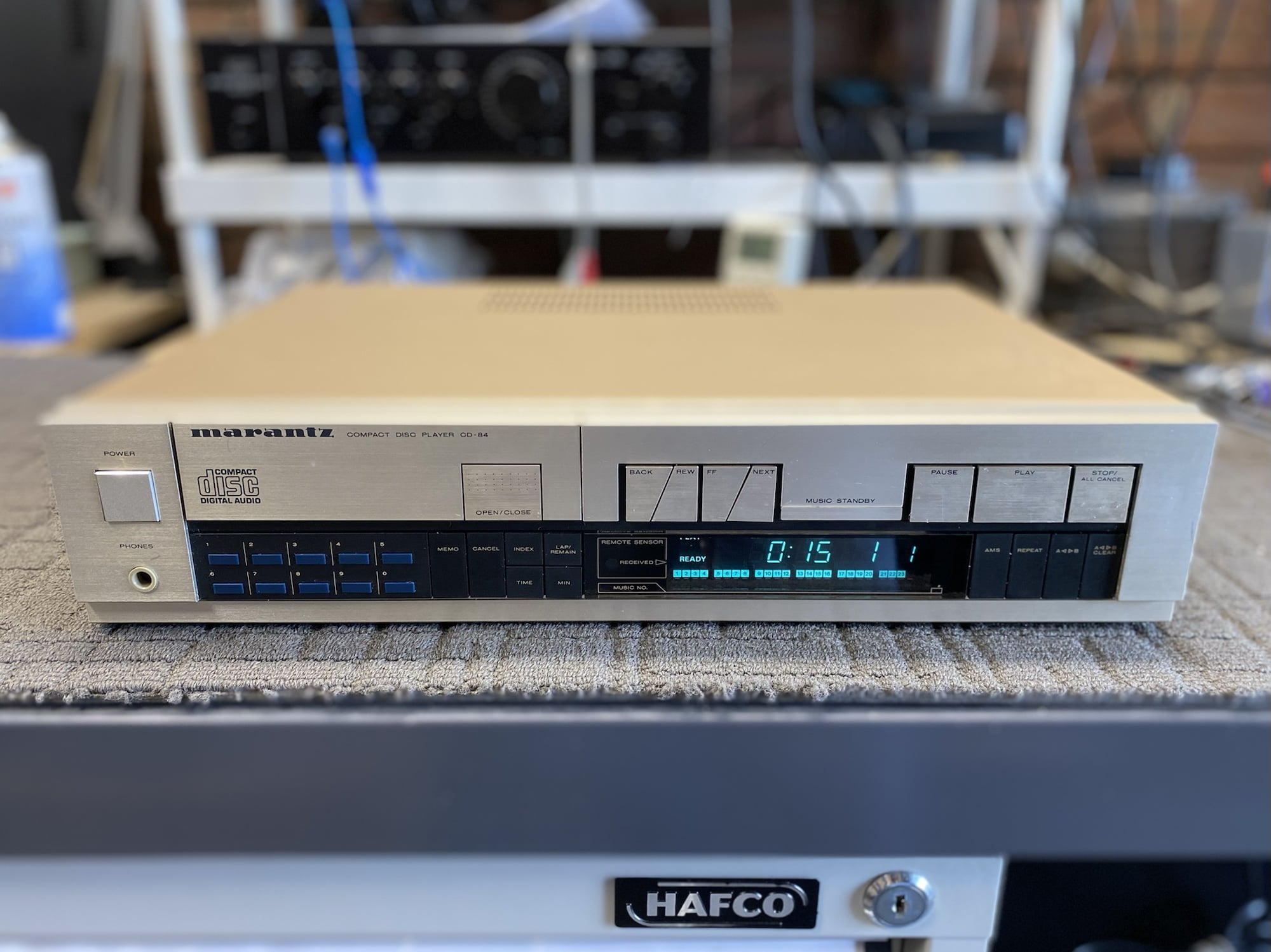
Legendary Elements
So, how did we get here? I don’t really know, but a ton of Redbook CD stuff was happening back from around 1979 through to pre-release in 1982. The Marantz CD-84 isn’t true first-gen in terms of CD players but it’s damn close. The real first-gen is the Philips CD-100 and Sony CDP-101, from 1982/83. The CD-84 uses all the same sorts of parts and technology and the 14-bit oversampling DAC architecture pioneered by Philips.
Keep in mind that the Marantz CD-84 cost a ton back in 1984 when it was released. These early players were really seriously built, the CD-84 weighing nearly 10kg, mostly because of its heavy-duty power supply, metal construction and serious Philips CDM-1 mech. That’s right, the Marantz CD-84 uses the infamous and perhaps most highly sought-after mech of all, the all-metal and glass, made in Japan, die-cast zinc CDM-1.
Don’t you want a die-cast zinc mech? I know I do!

Not only that, but the Marantz CD-84 also uses the Philips classic TDA1540 DAC chip. These chips are famous for having 14-bit resolution when the Redbook standard specified 16-bit resolution. What does this mean? Well, players with the 1540 chipset couldn’t resolve everything on the disc. Technically, this meant poorer dynamic range and low-level resolution of fine, quiet details.
Philips got around this by introducing the concept of oversampling, which attempted to restore 16-bit resolution and did a really good job. It also helped create the now-infamous TDA1540/1541 sound that people love. Heck, I even love it, I’ve owned/own several TDA1541 players including an Arcam Alpha 5, Meridian 207 CD player and Nakamichi OMS-7.
In practice, this wasn’t necessarily obvious. The CD-84 for example has a strong, robust sonic presentation, with the warmth and smoothness often lacking in early CD players. But then this was an upmarket player, you’d expect a strong performance.
It’s worth pointing out that even the high-resolution 18, 20 and 24-bit DACs that followed can’t or couldn’t always resolve the full 16-bit datastream. Herein lies one of the reasons why we can hear and measure differences between players.
Marantz followed up the CD-84 with the lovely CD-94, complete with wood side cheeks, TDA-1541A real 16-bit DAC, and still the legendary CDM-1 mech, which is up there with the best of the best. You can read MUCH more about the Marantz CD-94, its history, designers and loads more CD tech goodness in a great blog by René, a reader and blogger from the Netherlands.
Marantz CD-84 Specifications
Disc format: CD
Digital converter: TDA1540, 16-bit linear (almost!)
CD Mechanism: CDM-1
Frequency response: 4Hz to 20kHz
Dynamic range: 90dB
Signal to Noise Ratio: 90dB
Total harmonic distortion: 0.003%
Line output: 2V
Dimensions: 416 x 90 x 300mm
Weight: 9.2kg
Year: 1984
Issues, Repair & Service
This player was dead when I received it. A big shout out to my customer Justin by the way who I want to thank for donating this machine to Liquid Audio. If you are reading this Justin, I owe you a couple of beers!
I fairly quickly found the issues that had consigned this lovely old girl to the scrap heap. In this case, issues with the loader and display, broken motor connections, dry joints, and the need for general maintenance prevented her from running until they were addressed.
Getting her back up and running involved repairing the drawer load motor wiring, fixing a bunch of dry joints on the DAC and front panel boards, cleaning and lubricating the nearly all-metal loader mechanism and a general chassis clean.
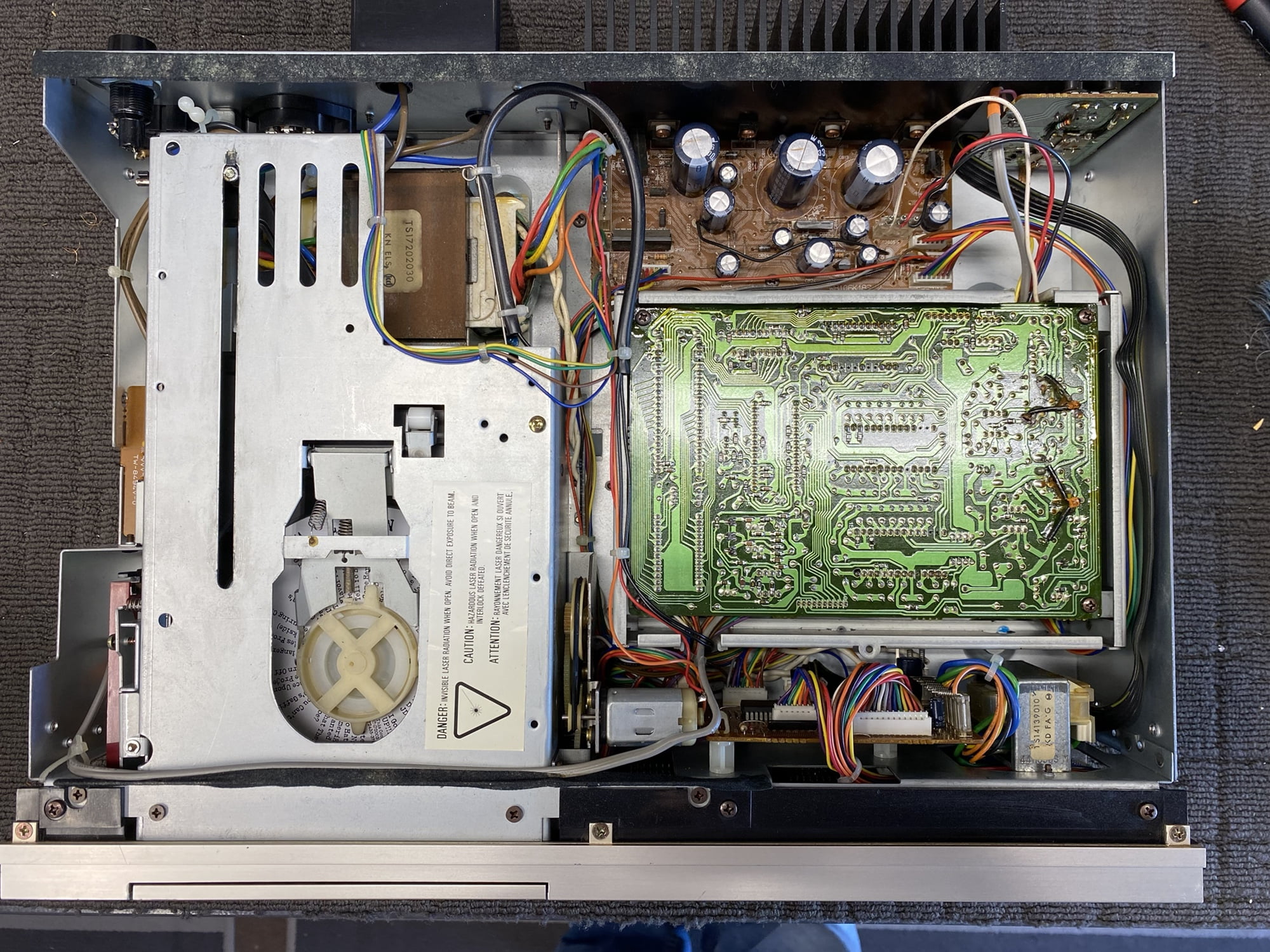
So – dry joints, CD-84, TDA1540 – what’s the connection? Well, part of the answer lies in the serious external heatsink and power supply transistors. These early players, with less efficient lasers, large motors and early ceramic-package silicon draw lots of power. Just the DAC chips alone consume 1 Watt, and there are two of them. The chips get hot, joints become degraded and need re-work.
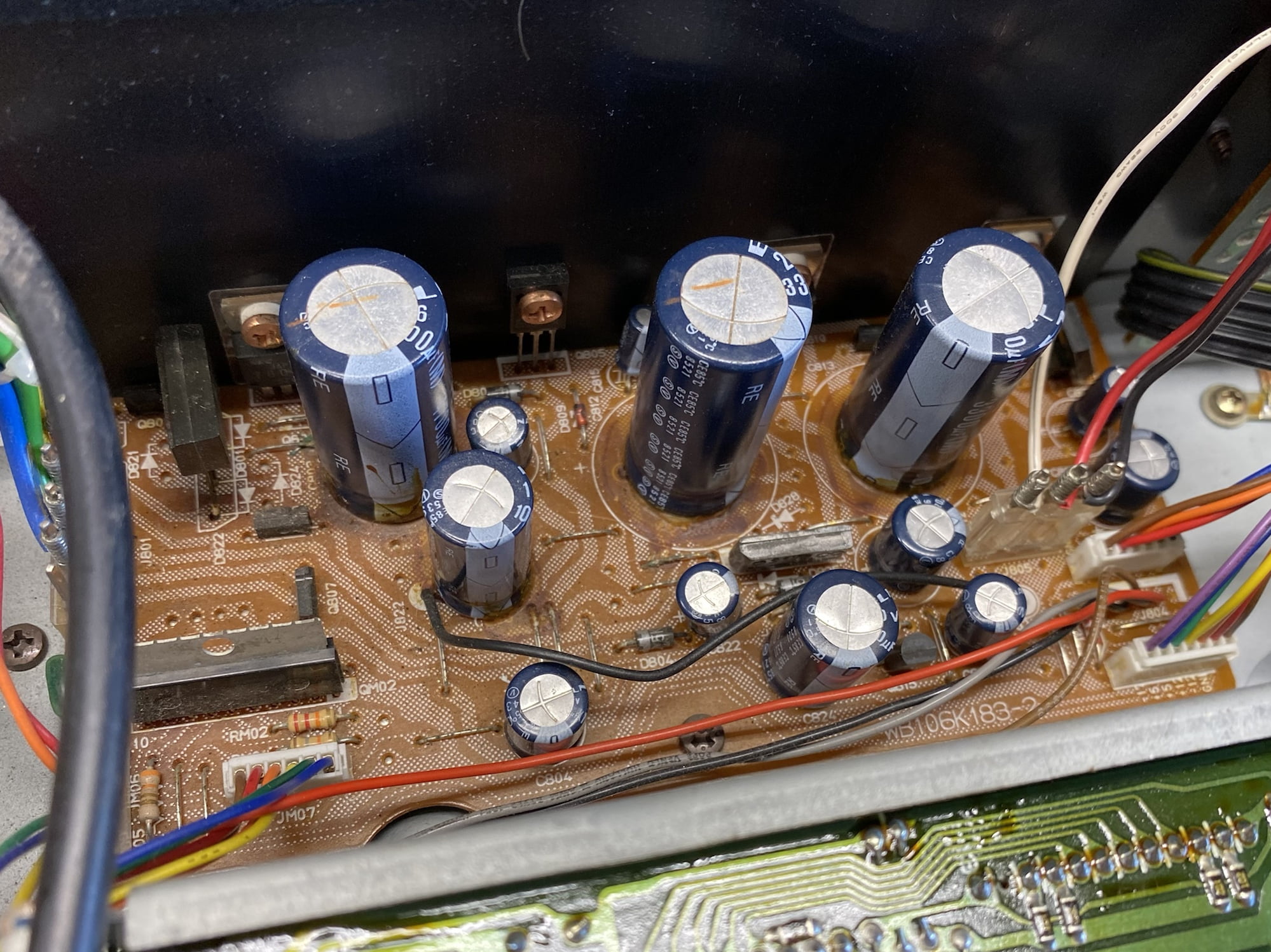


I’m sure a bunch of people will wonder why I’ve not recapped this CD-84 and stripped her down to her very last nut and bolt as part of a deep rebuild. The answer is simple – she doesn’t need any of that. Would she benefit from some overhaul work? Probably, but I believe in a conservative approach, and her next owner might very well like to make those decisions for themselves.
Performance
So, how does she run and sound? In a word, amazingly, now she plays discs again! It’s quite a trip down memory lane using one of these early players when you haven’t done so in a while. Control layouts have changed over the year,s and the slow and heavy drawer is a far cry from today’s flimsy plastic loaders.
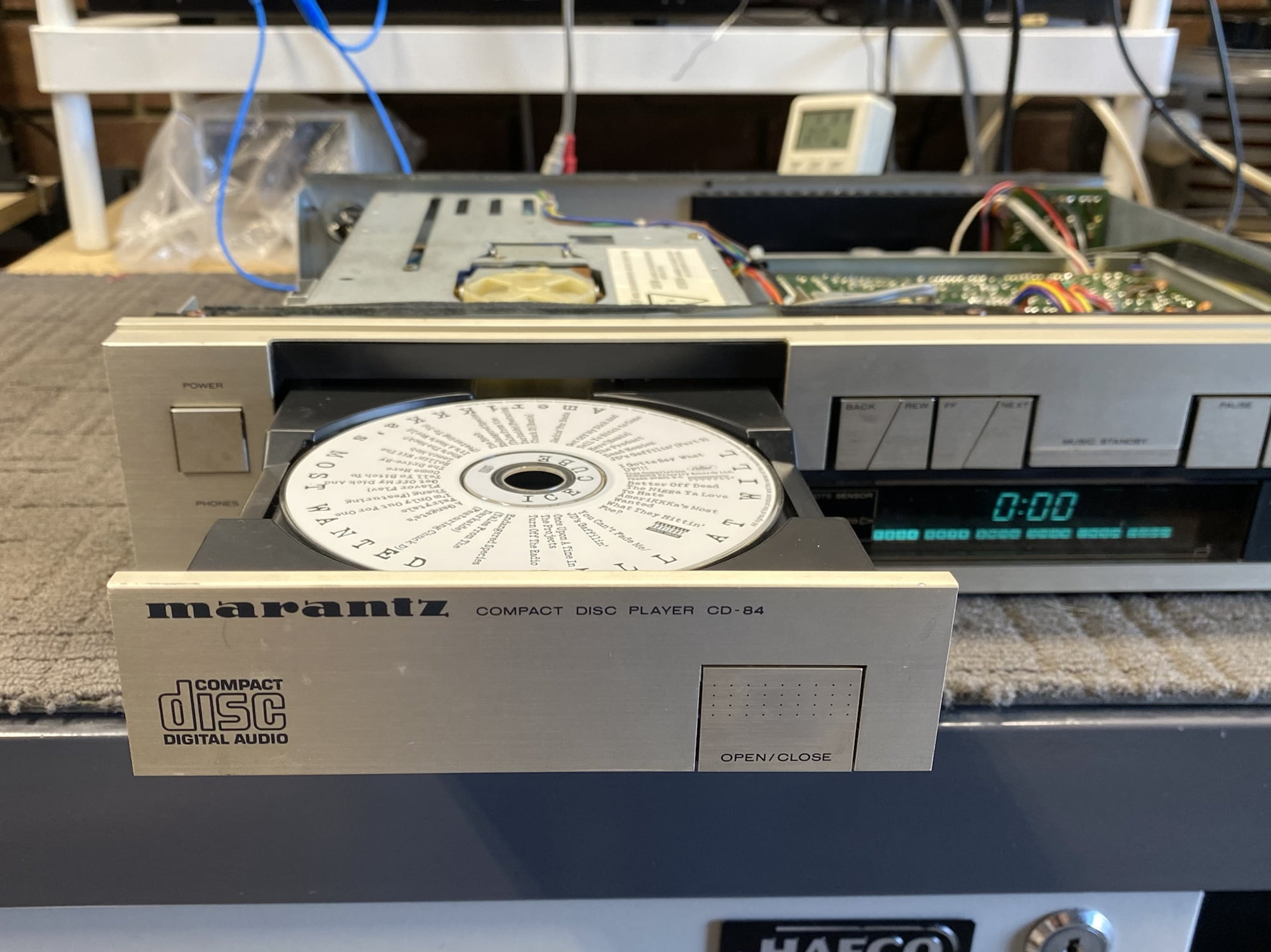
I need to make clear that CD player sonic performance has improved over time, as a general rule. That means that a 14-bit player like this Marantz CD-84 cannot sound as good as a really good player from the 2000s, for example, it’s just not possible. That being said, it will sound different.
Nothing sounds quite like these early R2R machines, and when I first listened to this old girl, I was immediately taken by the snap and punch of the sound on offer here. That’s from someone who’s owned some of the great CD players and heard many hundreds more over the years, so it’s no faint praise.
The CD-84 is punchy and warm. She doesn’t have the highest resolution, but these TDA1540 and 1541 machines have a warmth and a lushness that truly belies their age. It’s strangely counterintuitive to think of older players, which often sounded thin and shrill, in fact sounding warm and rounded as this machine does.
It’s also a timely reminder that not all CD players from this era are the same, a subset of why all CD players don’t sound the same. I have bad memories of early players, but I never owned a CD-84 for example because I couldn’t afford one, especially not at 15 years old!
Machines like this CD-84 are becoming very collectible, like all quality, historic audio gear. I’ve said before that CD is the new vinyl, and it really is. With CD collections selling for as little as $1 per disc, you just can’t go wrong with great players from the ’80s, ’90s and 2000s.
For Sale
The really good news is that this stunning champagne Marantz CD-84 CD player is for sale.
That’s right, I’m selling her. Regular readers will know that I have too many CD players and, despite having sold a ton of gear recently, and my desire to keep this classic piece of digital audio equipment, I just don’t need any more CD players, so she is up for grabs.
Keep in mind that this CD-84 is completely original, apart from her recent repair and service. I’ve left her that way on purpose, so that her next owner can make those decisions, hopefully with the right guidance.
Sacrilegious as it is, the two TDA1540s and the CDM1 mech are so rare and sought after that no doubt some will see this as a part-out opportunity. I hope that doesn’t happen. This Marantz CD-84 is far too sweet a player and a wonderful piece of collectible hi-fi history to be broken up for parts. She deserves to sit in a vintage hi-fi system, where someone else can enjoy her, likely for a few more years yet.
So, this beautiful and rare Marantz CD-84, punches on at 38 years of age. This is how they used to be made. She is now available in the Store, so look for her over there!
UPDATE: Sold!
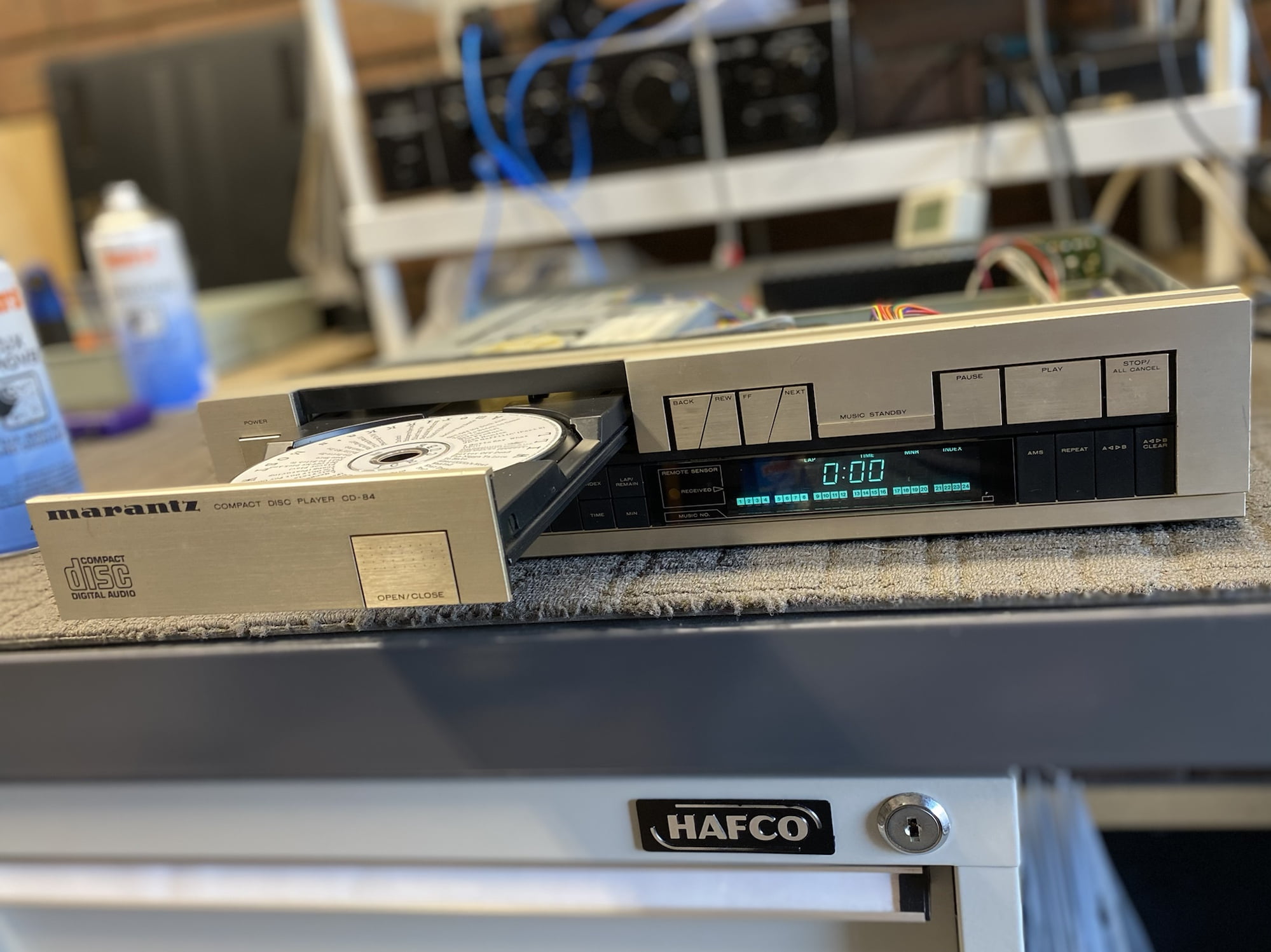

As always, thank you for visiting and I hope you found this article of some interest. Don’t hesitate to let me know if you’d like me to service or repair your Marantz CD-84 or any other classic Marantz CD player.
Discover more from LiQUiD AUDiO
Subscribe to get the latest posts sent to your email.

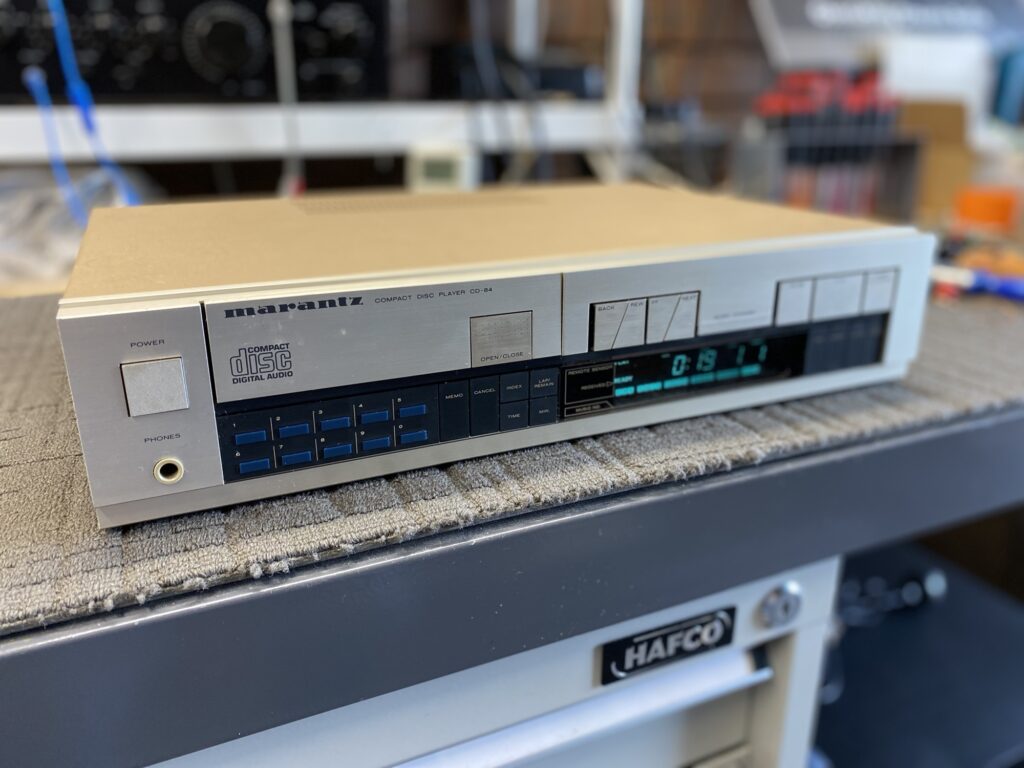
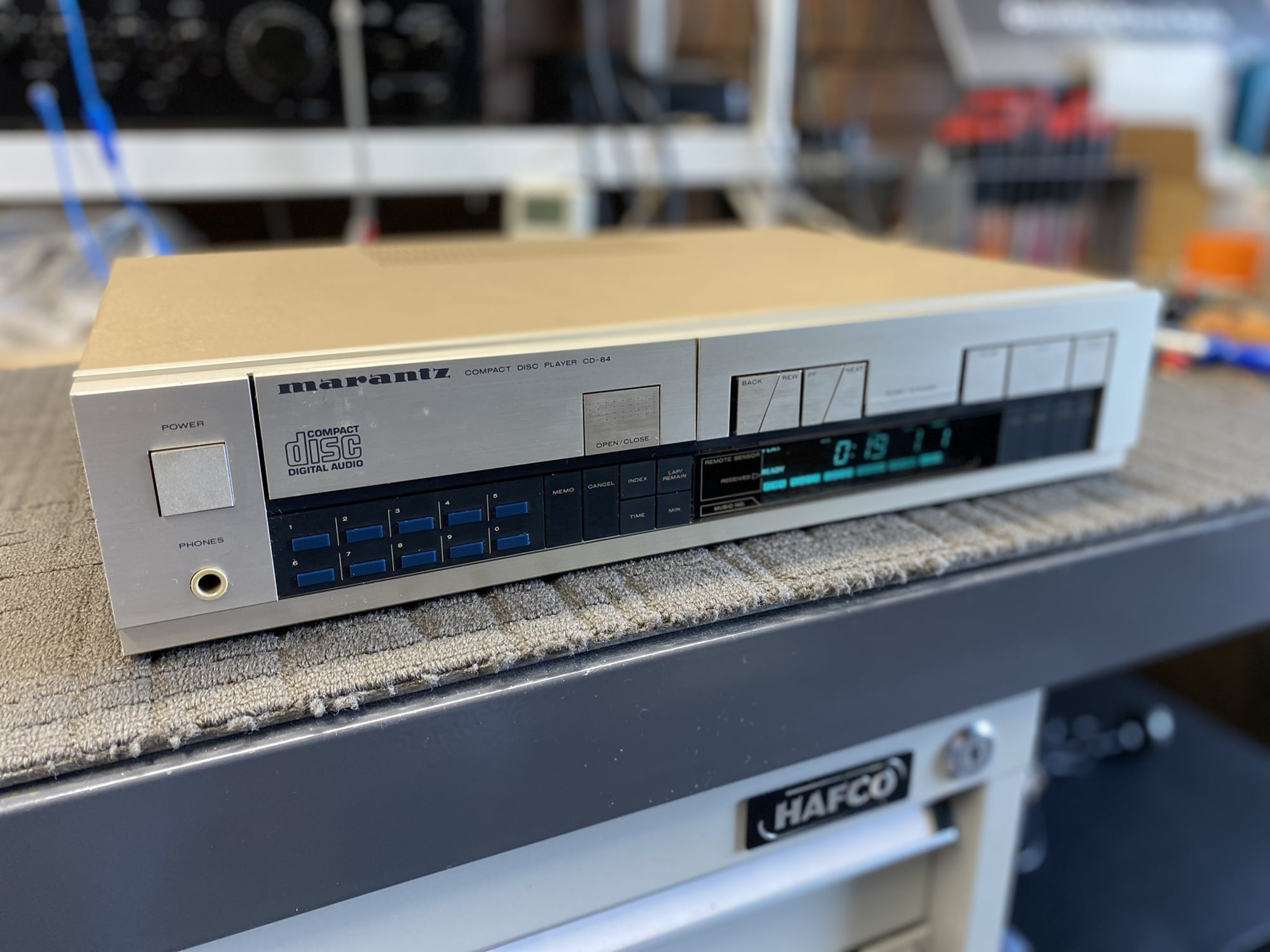
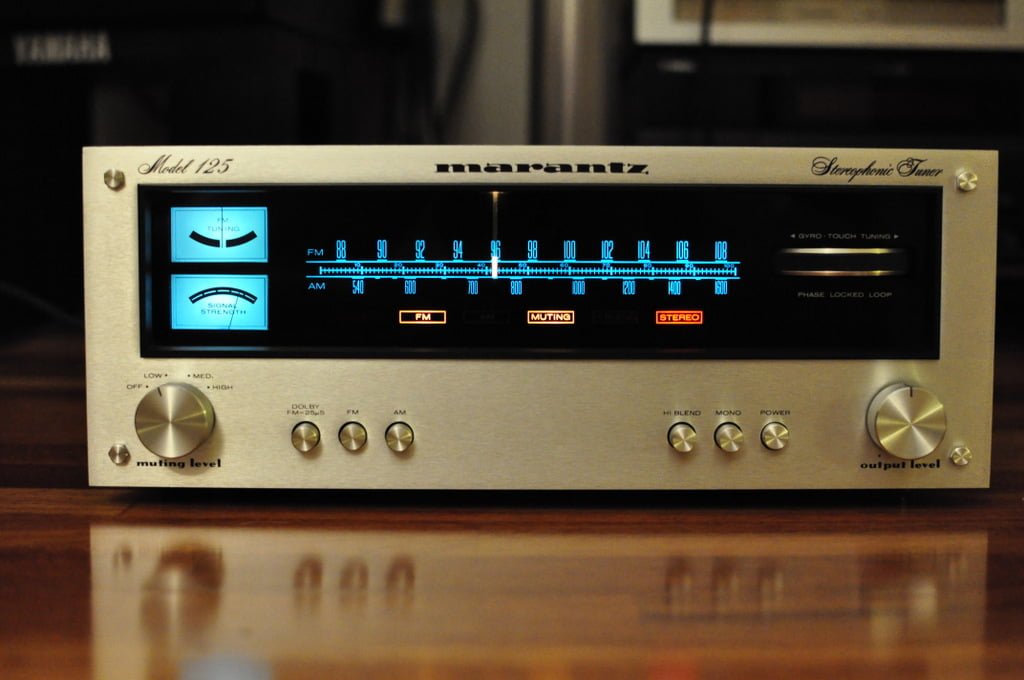
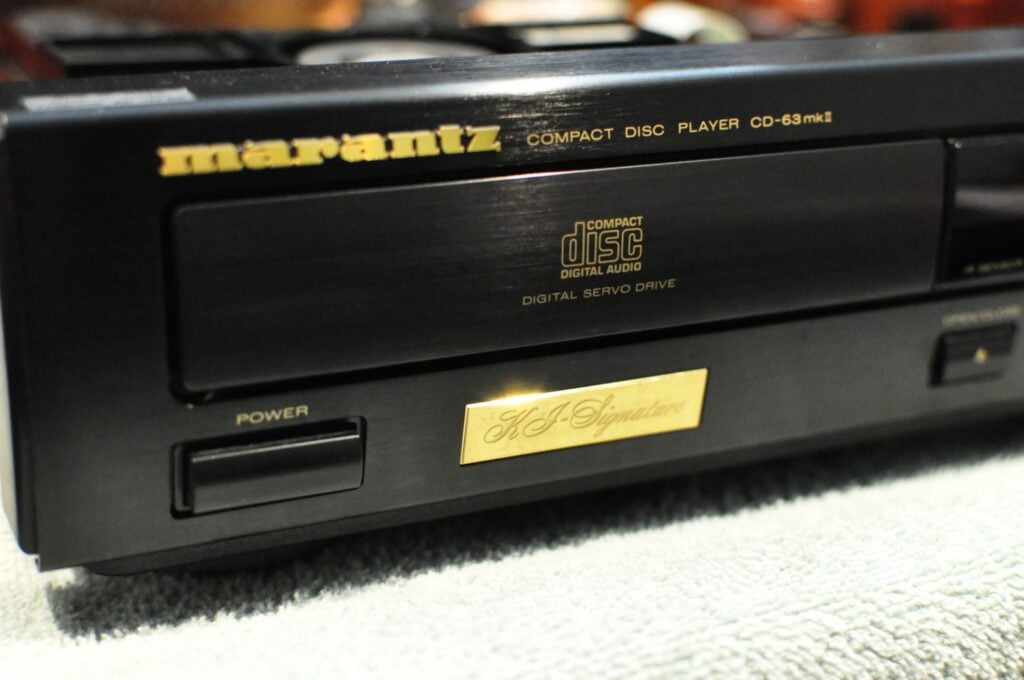
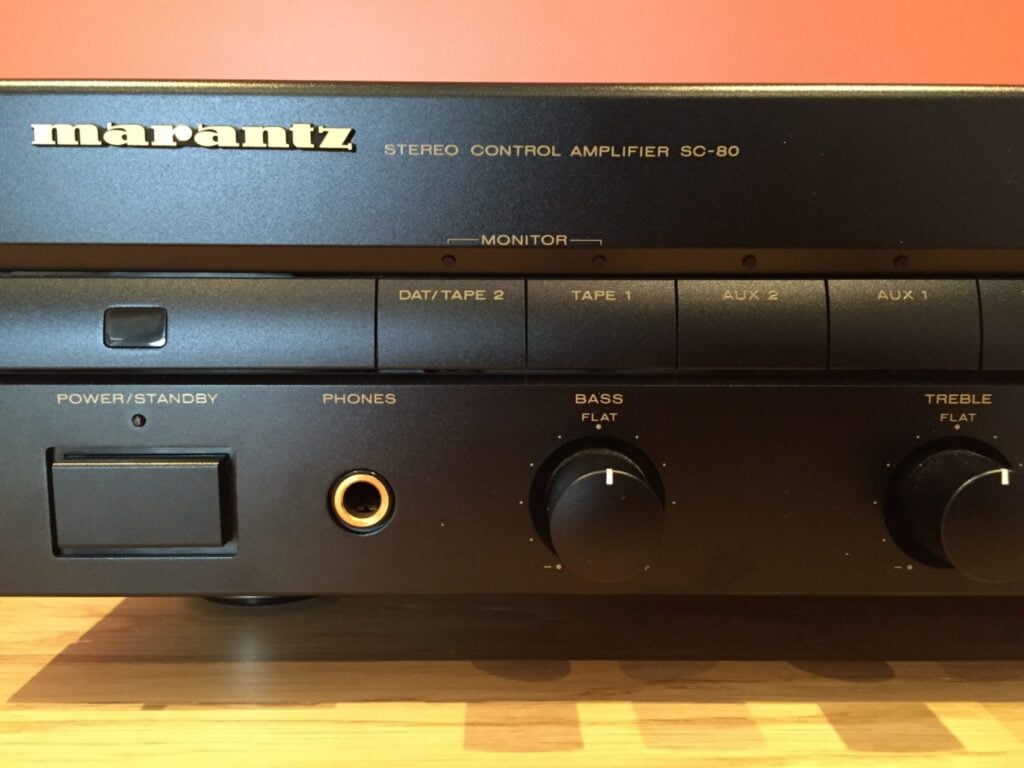
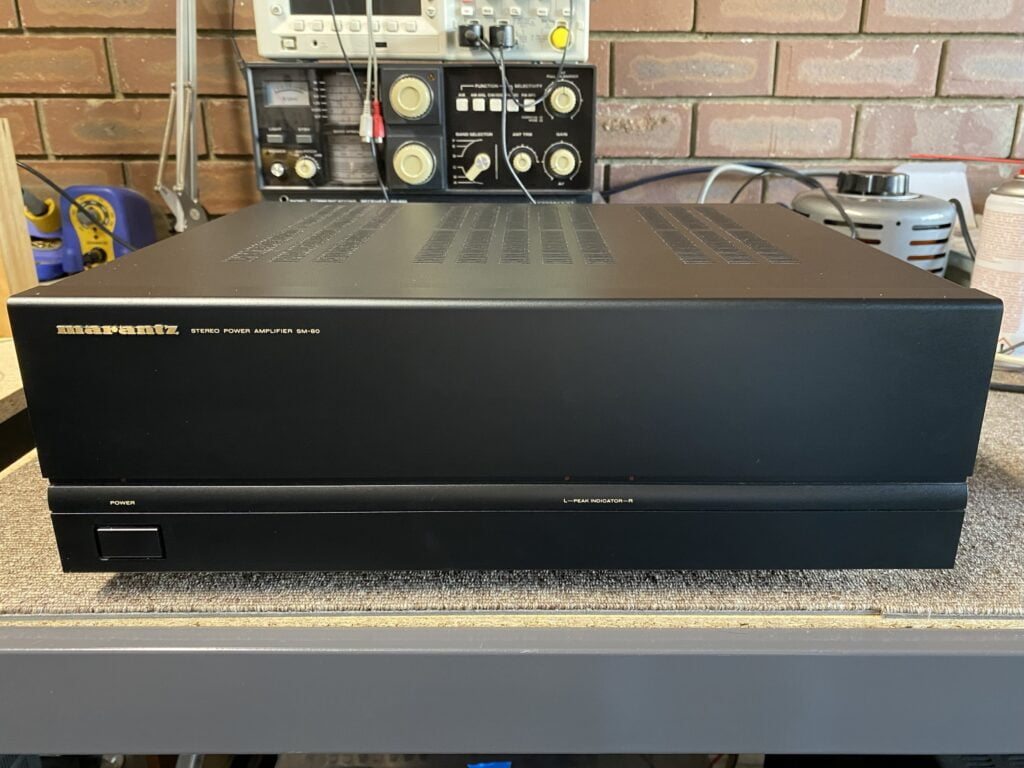
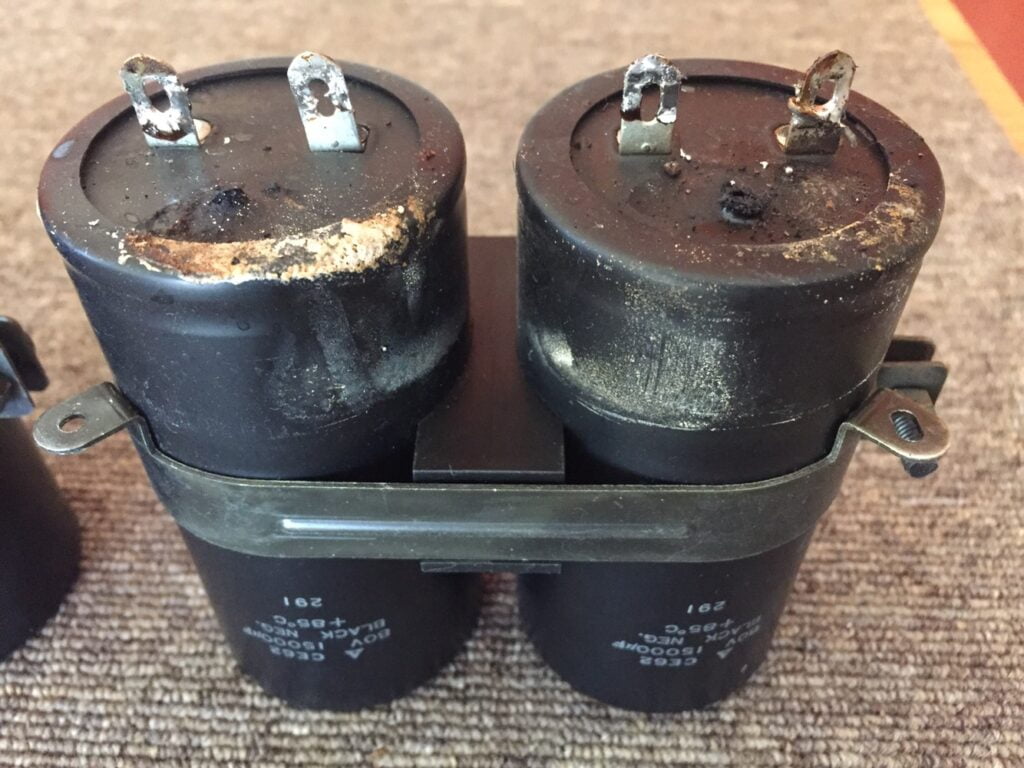
Excellent analysis as usual. Extremely informative for people like me who love hi fi but are not particularly technical.
Mike is totally independent so you know his opinions are genuine and based on his expert knowledge. A real asset to consumers.
Thanks Tony, glad you enjoyed the article!
Great piece! I mean the article & the unit. I don’t have anything that historic in my digital gear. The closest I get is my Harmon Kardon HD 7600 II which I scored in a vintage vinyl shop around a half a decade ago for 20 US dollars. As I understand it, it was HK’s statement player the year it came out & retailed for 799.00 US. Despite some breakage of the plastic fast forward & reverse buttons on the front panel, it plays cds flawlessly & is my favorite way to listen to digital audio. I really wish I could compare it’s sound to the Marantz CD 84.
Thanks, Tim, your HK is another classic. That’s an early bitstream player, it will definitely sound different to the Marantz, worth a listen if you ever get the chance to compare them. Generally speaking, people are less fond of early bitstream players but each player is different and has its own unique sound. Keep playing those silver discs!
Very well done, I really like what you are doing. I love CD players from the 80s, I do have all Topmodel Kenwood players included 2 DP 3300D you serviced before. Keep vintage players alive, you make it shine again. Best regards from Holland
Hi Chet, thanks for your comment, I’m glad you are enjoying the site and these wonderful vintage CD players!
What a beautiful review of a Marantz’ classic!
Thanks Rene, I agree, what a beautiful player!
Nice to meet you,
I have a cd player marantz cd 84. Everything works normally, except……audio doesn’t come out. Can this problem be fixed, or maybe someone is interested in the condition of the cd player like this.
Hi Achmad, thanks for your comment, almost all faults can be repaired and I’m sure this is no different. I’m sure you will find someone who would love this player as a potential project!
Nice to meet you,
I also have a Marantz CD84 CD Player which is all in good condition, except that no audio appears. Is there a solution that can be done, or maybe someone is interested in the condition of the CD Player like this.
Hi Achmad, thanks again for your comment. I replied to your first comment and yes, this certainly will be repairable, or alternatively, someone may like to take it off your hands!
Hello
I have a marantz cd 84 cd player with a problematic DAC (Decoding) condition so it doesn’t output audio. All button functions when playing, pause, FF , REW, Back and others on the display look normal. I have also checked all the JRC 4560 ICs for CD Out and Head Phone out, all are normal. The “mute” and “Kill” sections are also normal. Are there any colleagues who know about this problem?
I once made a VCD Player using the Mpeg VCD kit by utilizing the Marantz CD-84 CD Player’s EFM (RF) output signal and it worked.
Now I want to try to modify the normal EFM (RF) output signal that is converted to an external DAC but I don’t know how.
Do you know how to modify this
I look forward to a response from you guys here
Thank You.
Hi Achmad, thanks for your question. I’ve seen issues like this before, with varying causes. DAC issues with older TDA1541-based machines are not uncommon and this should be investigated, using an oscilloscope to trace the signal. If you want to build an external DAC, look at some DAC chip manufacturer datasheets as they have circuit applications and suggestions in many cases.